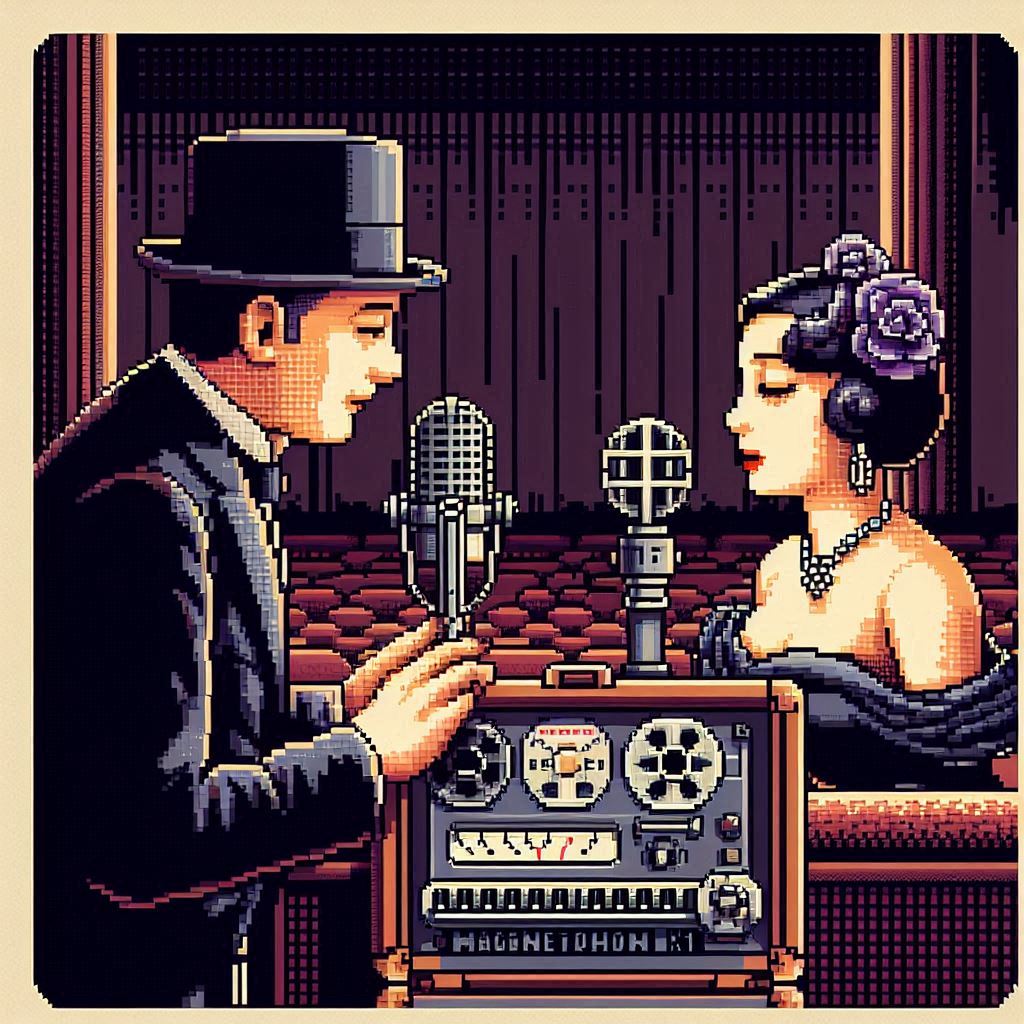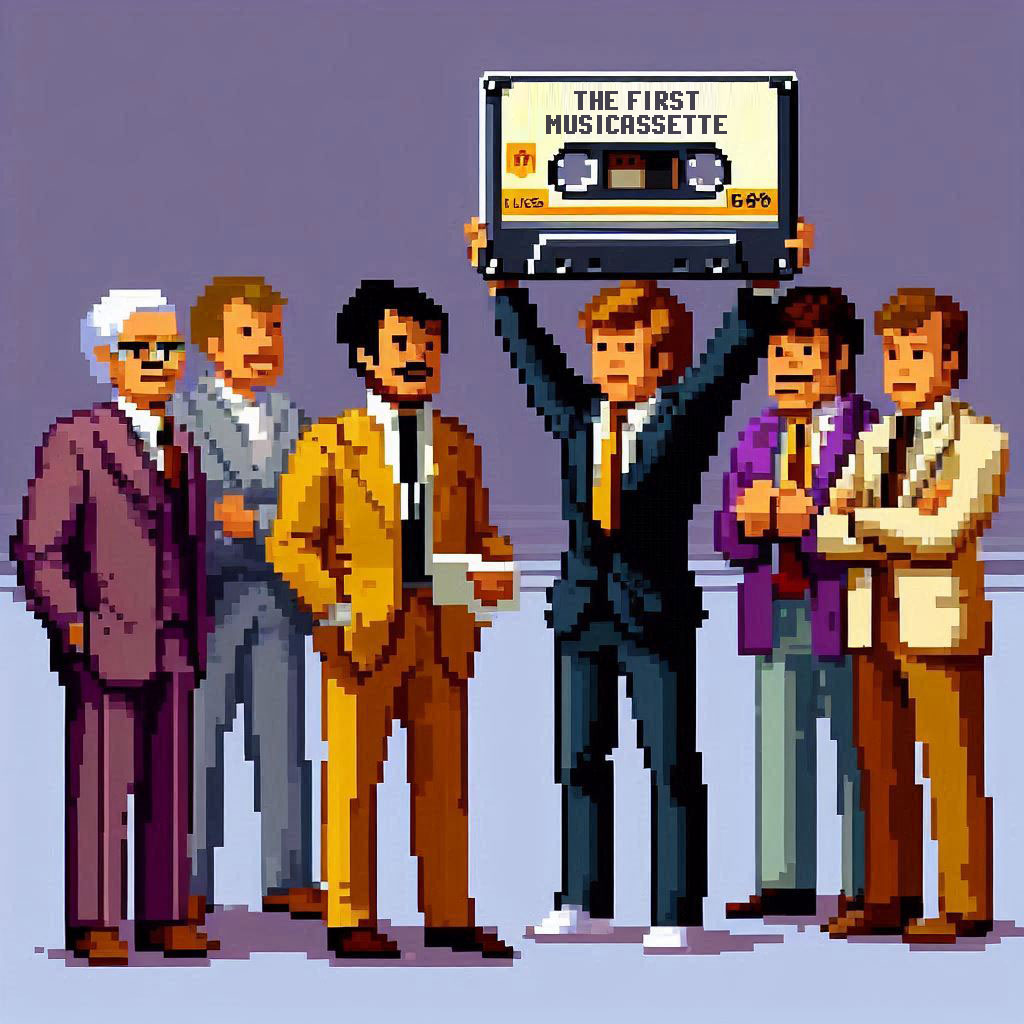
Since the dawn of time, human beings have always played and listened only to live music. There was no way to record music and the only way to pass it on was to write the notes on a score, or listen to a song and repeat it from memory. After thousands of years, in the mid-1800s in France an instrument was created that was destined to radically change the way we listen to music. On March 25, 1857, Édouard-Léon Scott de Martinville patented the Phonoautograph, the first instrument that allowed us to record (but not yet reproduce) sounds and music. After thousands of years, the era of the music industry was about to begin.

20 years later, in 1877, Thomas Edison invented the Phonograph, the first instrument that allowed sound to be recorded and reproduced on a brass and tin foil roll (the phonograph cylinder). In reality, the phonograph was not created to acquire and reproduce music: Edison's purpose was to record letters in offices and create audio books for the blind. A few years later, the Graphophone was created, an improved version of the Phonograph, using wax instead of tin foil. Science and technology are trying to immortalize musical pieces, giving them eternal life... for better or for worse.

10 years later, in America, the German inventor Emile Berliner perfected the phonograph using 78 rpm shellac discs, called phonograph records. Thus was born the first Gramophone, the father of the modern record player. The success was immediate: recorded discs were easier to produce, transport and store. The Standard model cost $29 (the average salary in the early 1900s was $50 a month). From then on, anyone (if they had the money) could buy a gramophone and listen to recorded music in their living room, alone or with friends. The 78 rpm record would remain the standard format until the 1950s.

A new invention is on the way: in 1898 the Danish Valdemar Poulsen invented the Telegraphone, better known as a wire recorder. The sounds are not recorded on a disk, but stored on a steel wire magnetized by a head. It is the first device that allows you to connect a microphone to record the sounds of the environment. Its initial purpose, once again, is not aimed at the world of music. In fact, until the 1940s the telegraphone was used mainly to record conferences or theatrical events. The recording quality is very low, with strong background noise, distortions and notable changes in speed. Listening to music is almost impossible... But it is only a matter of time.

30 years later, in Germany, the Magnetophon K1 is patented. It's the first model of recorder that uses magnetic tape instead of steel wire. The recording quality is much higher, finally it is possible to listen to recorded music in an acceptable quality. The tape recorder revolutionizes the world of commercial recording, it is widely used in radio stations, concert halls, political demonstrations and on television. For one hour of recording, almost a thousand meters of magnetic tape are needed, but the reel can be overwritten several times. For musicians this is a great advantage, if they make mistakes they can record again.

In 1963, in Berlin, Lou Ottens presented his creation: the first cassette tape in history. Thanks to this invention, music became accessible to everyone and easily transportable. It could be listened to at home, in cars, anywhere, at a low cost and with high quality. The cassette tape was robust, easy to use, very cheap and pocket-sized. This was a miracle for the music industry, which began to record and distribute the first real albums on cassette tape. This invention marked the beginning of mass record production... and music piracy.

Music playback technology is more and more pocket-sized: in July 1979, Sony launches a small cassette player with headphones that will change the way we listen to music forever: the Walkman! The era of personalized listening begins: listen to the music you want, when you want, where you want. With the Walkman, powered by small batteries, you can listen to your music while walking, playing sports, outdoors, in total privacy. To avoid making people too antisocial, the first version of the Walkman had a double output for headphones, to listen to music in company... But no one really used this function, so it ended up being removed.

Thanks to vinyl records, cassettes, car radios and portable stereos, music is everywhere: in homes, on the streets, in shops, in cities and in the most remote places. But the quality of the medium has its limits: vinyl records and cassettes produce rustling, crackling and slight distortions. They also get damaged easily, with each listening session the musical quality gets worse. Sony again, in 1982, makes a huge leap forward, with the first Compact Disc Audio in history. For the first time, sound is stored in digital format. The quality is very high, without rustling or mechanical distortions, the CD does not get damaged by listening (as long as you don't scratch its surface). The decline of vinyl records and cassettes begins.

Until the end of the 90s there was only one way to exchange music: lend or duplicate a cassette tape or an audio CD. Music piracy was already widespread, but music was still tied to a physical medium. With the arrival of the Internet and the MP3 format, which drastically reduces the size of music files while maintaining good sound quality, anyone can exchange music digitally, without the need for a physical medium. From 1998 onwards, increasingly large MP3 players were marketed, which could contain thousands of albums and songs. Because of websites like Napster, music piracy was rampant and sales of audio CDs collapsed.

In 2003, Apple launched its famous iPod mp3 player, along with the iTunes service, which allows you to download music on a subscription basis. In 2006 Spotify was born, the most famous music streaming service in the world. Thanks to smartphones and Spotify, you can now listen to millions of albums and songs for free or with a small subscription, without limits. Over 60 thousand new songs are uploaded to Spotify every day. Almost no one buys CDs and vinyl records anymore, a few large record companies (the majors) dominate the online streaming market, while emerging and independent artists are increasingly struggling. What will be the next big revolution?